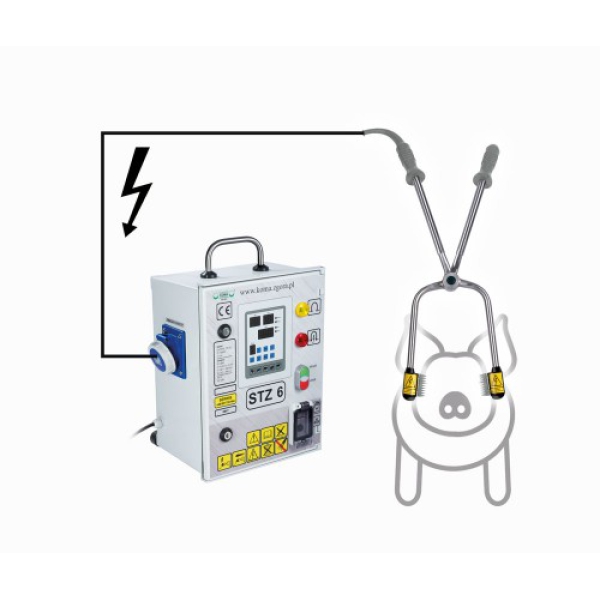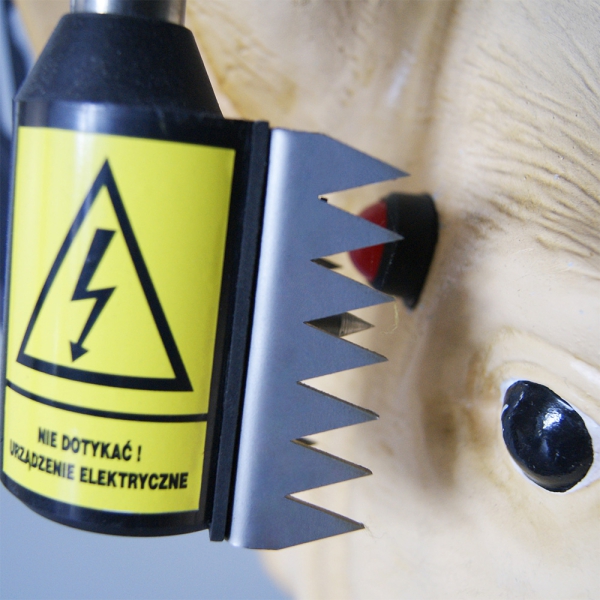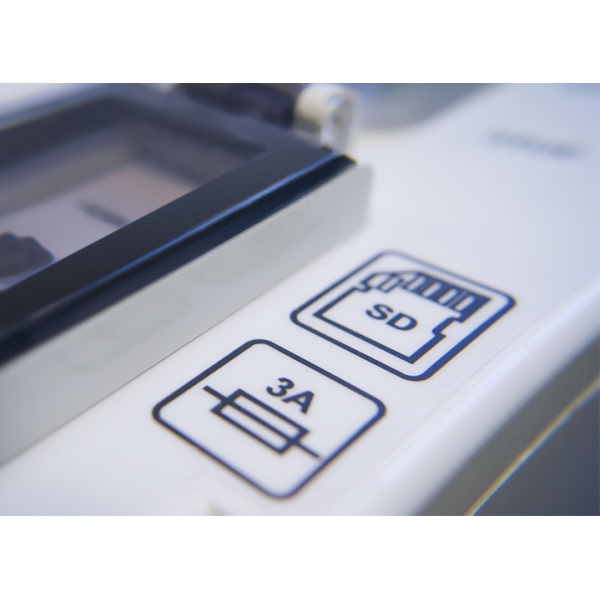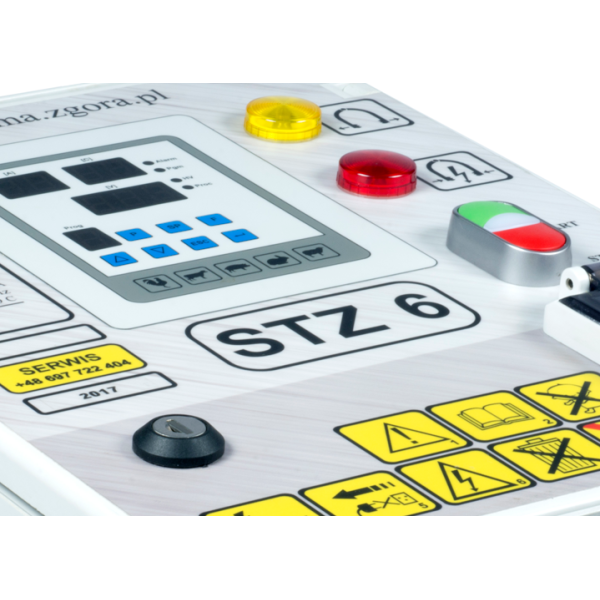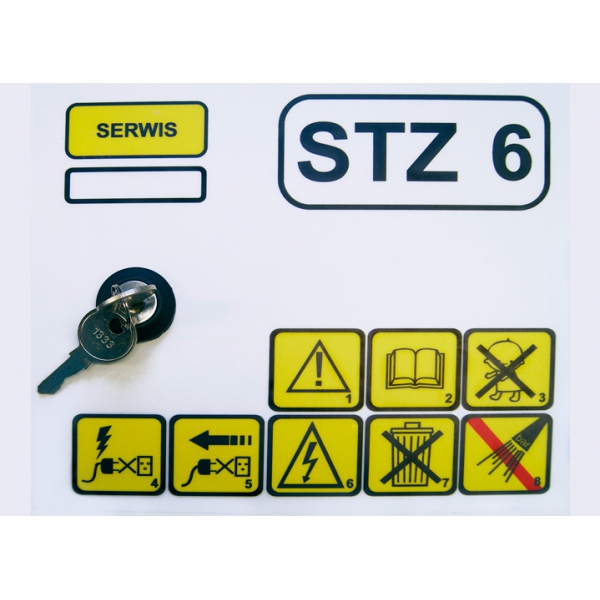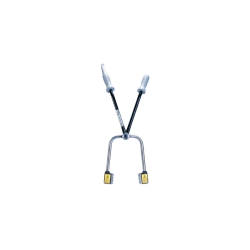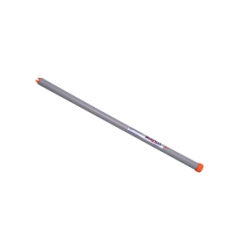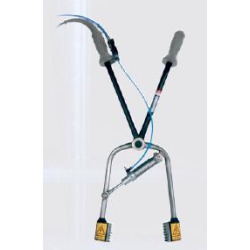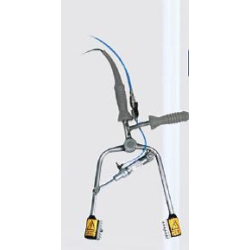Input Output
U = 230 V; 50 Hz U < 400 V
P < 700 W I 0,02 ÷ 2,5 A
I < 3 A 50 ÷ 800 Hz
waterproof – IP 55
Weight - 14,4 kg
Cable - 5,0 m
Dimensions - 480 x 365 x 250 mm
Parameter recorder
The use of a third electrode reduces the uncontrolled reflexes of the animal (willpower) that occur as a result of the deafening and provides additional protection for the operator. In addition, it reduces the risk of spinal fractures and congestion in the muscles of the animal being stunned. The third electrode can be mounted on a pneumatic arm (shoulder) or on the cage wall (cage wall). It is activated automatically.
The operation of the device is based on the principle of automatically measuring the body resistance of the stunned animal. When ready for operation, only a low safe measuring voltage of approximately 15V is present at the open arm electrodes. When the electrodes are pressed against the animal’s body, the resistance is measured and a deafening voltage <400V is automatically applied, which is disconnected when the deafening process is completed (i.e. the electrodes are opened).
Stuning device STZ-6
- New
Technical details
-
230V; 0,8-2,5 A; 50-2500 Hz
-
400 W
Input Output
U = 230 V; 50 Hz U < 400 V
P < 700 W I 0,02 ÷ 2,5 A
I < 3 A 50 ÷ 800 Hz
waterproof – IP 55
Weight - 14,4 kg
Cable - 5,0 m
Dimensions - 480 x 365 x 250 mm
Parameter recorder
The use of a third electrode reduces the uncontrolled reflexes of the animal (willpower) that occur as a result of the deafening and provides additional protection for the operator. In addition, it reduces the risk of spinal fractures and congestion in the muscles of the animal being stunned. The third electrode can be mounted on a pneumatic arm (shoulder) or on the cage wall (cage wall). It is activated automatically.
The operation of the device is based on the principle of automatically measuring the body resistance of the stunned animal. When ready for operation, only a low safe measuring voltage of approximately 15V is present at the open arm electrodes. When the electrodes are pressed against the animal’s body, the resistance is measured and a deafening voltage <400V is automatically applied, which is disconnected when the deafening process is completed (i.e. the electrodes are opened).

